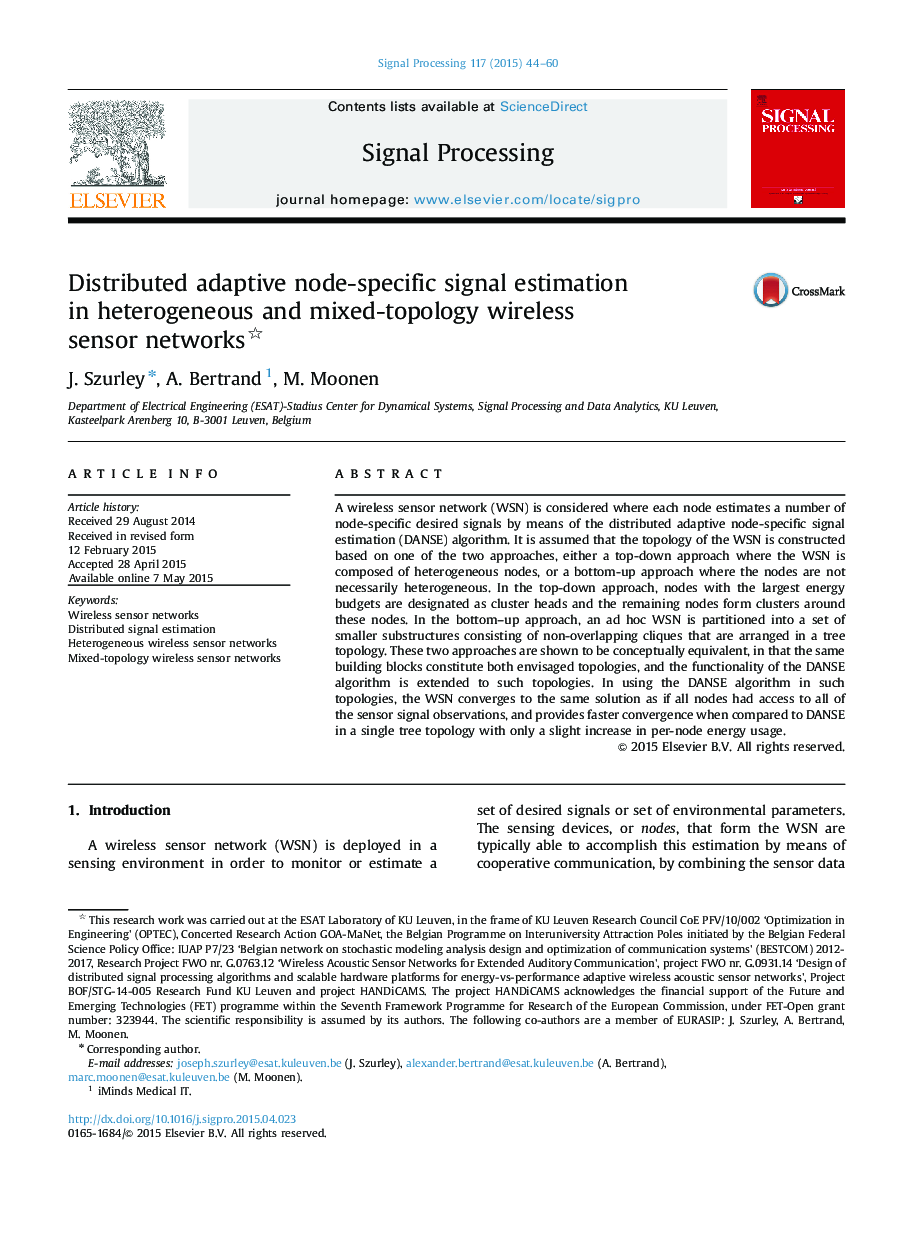| کد مقاله | کد نشریه | سال انتشار | مقاله انگلیسی | نسخه تمام متن |
|---|---|---|---|---|
| 562364 | 1451950 | 2015 | 17 صفحه PDF | دانلود رایگان |

• The DANSE algorithm is extended to heterogeneous and mixed-topology WSNs.
• The topologies are considered to be composed of smaller substructures.
• The convergence properties of the DANSE algorithm are retained.
• This convergence is achieved at a faster rate when compared to the TDANSE algorithm.
A wireless sensor network (WSN) is considered where each node estimates a number of node-specific desired signals by means of the distributed adaptive node-specific signal estimation (DANSE) algorithm. It is assumed that the topology of the WSN is constructed based on one of the two approaches, either a top-down approach where the WSN is composed of heterogeneous nodes, or a bottom-up approach where the nodes are not necessarily heterogeneous. In the top-down approach, nodes with the largest energy budgets are designated as cluster heads and the remaining nodes form clusters around these nodes. In the bottom–up approach, an ad hoc WSN is partitioned into a set of smaller substructures consisting of non-overlapping cliques that are arranged in a tree topology. These two approaches are shown to be conceptually equivalent, in that the same building blocks constitute both envisaged topologies, and the functionality of the DANSE algorithm is extended to such topologies. In using the DANSE algorithm in such topologies, the WSN converges to the same solution as if all nodes had access to all of the sensor signal observations, and provides faster convergence when compared to DANSE in a single tree topology with only a slight increase in per-node energy usage.
Journal: Signal Processing - Volume 117, December 2015, Pages 44–60